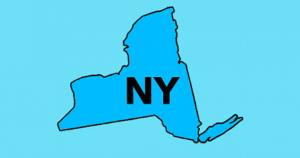New York: BHP expansion waiver on hold while enrollment quietly increases by 163,000

New York's implementation of the ACA's Basic Health Plan provision (Section 1331 of the law) is called the Essential Plan. It currently serves over 1.1 million New Yorkers, or over 5x as many residents as ACA exchange plans do.
Whenever I write about BHPs I always throw in a simple explainer about what it is, with an assist from Louise Norris:
Under the ACA, most states have expanded Medicaid to people with income up to 138 percent of the poverty level. But people with incomes very close to the Medicaid eligibility cutoff frequently experience changes in income that result in switching from Medicaid to ACA’s qualified health plans (QHPs) and back. This “churning” creates fluctuating healthcare costs and premiums, and increased administrative work for the insureds, the QHP carriers and Medicaid programs.
The out-of-pocket differences between Medicaid and QHPs are significant, even for people with incomes just above the Medicaid eligibility threshold who qualify for cost-sharing subsidies.
The Basic Health Program (BHP) – section 1331 of the ACA — was envisioned as a solution, although most states did not establish a BHP. Under the ACA (aka Obamacare), states have the option to create a Basic Health Program for people with incomes a little above the upper limit for Medicaid eligibility, and for legal immigrants who aren’t eligible for Medicaid because of the five-year waiting period.
In short, if you earn up to 138% FPL, you enroll in Medicaid; from 138 - 200% FPL, you enroll in a Basic Health Plan policy (BHP); at 200% FPL or higher, you enroll in a Qualified Health Plan policy (QHP).
Federal funding for BHP programs is supposed to be equal to 95% of the total amount of advance premium tax credits (APTC) and cost sharing reduction (CSR) assistance that the enrollees would otherwise have been eligible for had they otherwsie enrolled in a QHP using the ACA exchange.
Of course, the state itself can also throw in additional funding to make the BHP plans more generous if they wish...which is a key point to keep in mind. The coverage has to be at least as affordable and at least as good as a benchmark silver plan with Cost-sharing reduction benefits applied.
As I've written about several times this year, New York wants to expand the population eligible for the Essential Plan up the income scale:
The New York State Department of Health today announced it has submitted a proposal to the federal government to expand the Essential Plan, a public health insurance program offered through NY State of Health, the state’s official health plan Marketplace. The application for a final Section 1332 State Innovation Waiver, which was submitted to the U.S. Departments of Health and Human Services and Treasury, requests that eligibility for the Essential Plan be extended to New Yorkers with incomes between 200 and 250 percent of the Federal Poverty Level (FPL). Presently, eligibility is limited to New Yorkers with incomes up to 200 percent of the FPL who are ineligible for Medicaid.
The Essential Plan currently covers over one million New Yorkers. It provides comprehensive benefits with no deductible and minimal cost sharing, for those who qualify. If the waiver application is approved, nearly 100,000 additional New Yorkers are expected to gain access to the Essential Plan.
Unfortunately, as Louise Norris recently brought to my attention, it looks like New York's Health Commissioner has asked the Centers for Medicare & Medicaid Services (CMS) to put a hold on this program expansion for an undetermined period due to some uncertainty about tweaks to the BHP specifications:
Dear Secretary Yellen and Secretary Becerra,
The State of New York is writing to formally request that the U.S. Department of Treasury and U.S. Department of Health and Human Services pause its consideration of our pending 1332 State Innovation Waiver application.
Given the uncertainty surrounding the timing to release final regulations related to the current Basic Health Program (proposed in 88 FR 52262, 52542 (Aug. 8, 2023), we request that consideration of our application resume once the relevant regulations have been finalized. I understand that we must resubmit certain components of our application with a new effective date.
Our team looks forward to continuing our work on this important project once the uncertainty has been resolved. Thank you for your consideration in this matter.
The good news is this will likely only cause a delay of a few months (?) in the BHP expansion being implemented (assuming it's approved, which seems pretty likely but you never know).
In the meantime, I was looking up some stats on New York's current Essential Plan enrollment and was surprised to discover that it's jumped a lot even beyond the already-impressive increase it saw earlier this year.
Back in April, NY State of Health issued a press release compiling enrollment in all of their public healthcare coverage programs, which included 5.2 million in Medicaid, 377.6K in CHIP (called Child Health + in NY), 214K in ACA exchange Qualified Health Plans (QHPs) and 1,123,110 residents enrolled in the Essential Plan.
According to their September enrollment reports, however, both QHP and BHP enrollment have since jumped dramatically:
- September 2023 QHP Enrollment: 251,766 total (up 37,714, or +17.6% since January)
- September 2023 BHP Enrollment: 1,286,260 total (up 163,150 or +14.5% since January)
Much of this is likely due to the Medicaid Unwinding population migrating over to QHP/BHP plans. Only 5,946 and 54,711 New Yorkers had officially done so as of the end of June, but these reports are as of September; having those numbers jump 6.3x and 3x over the next three months seems plausible.



